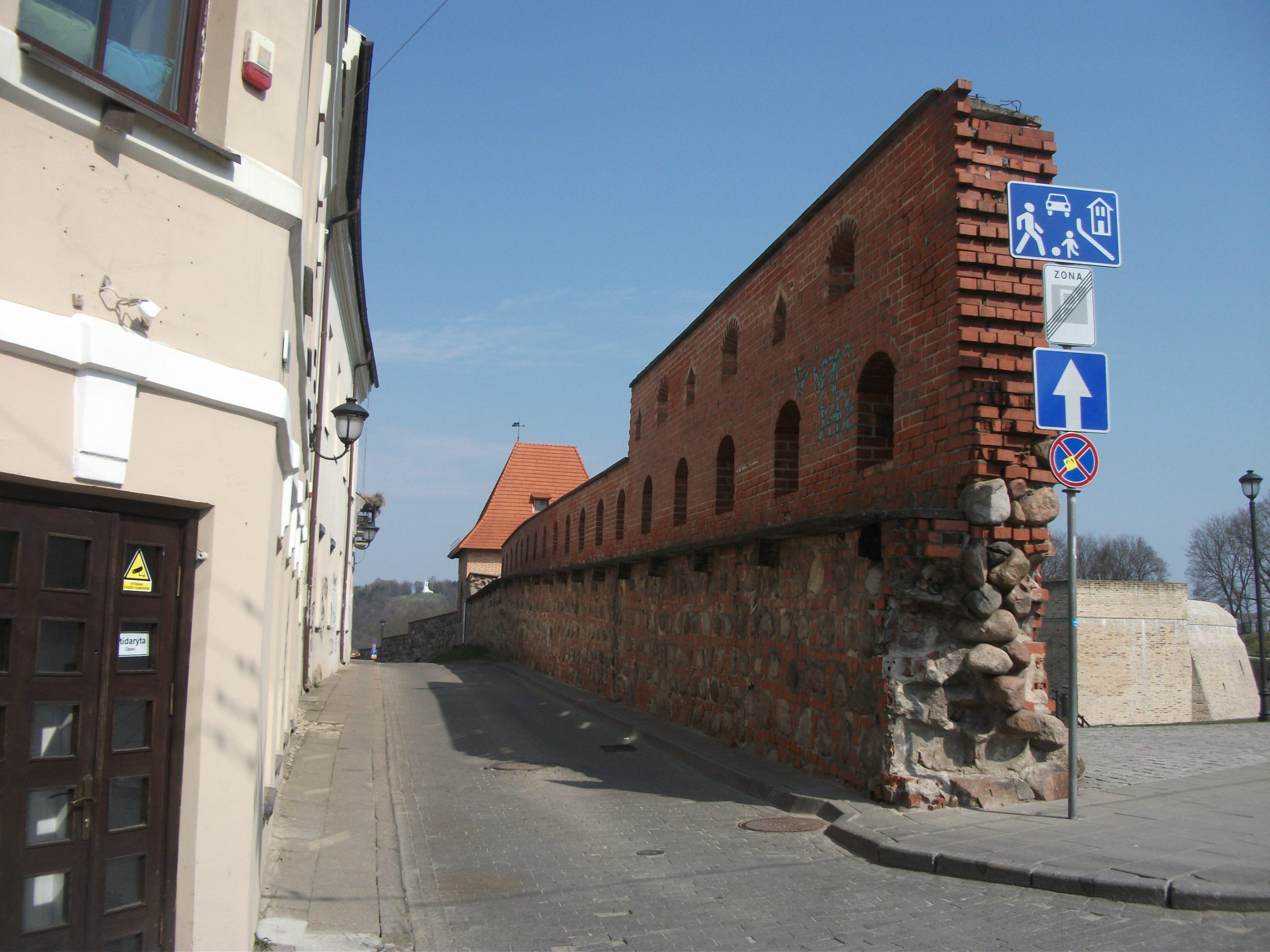Views: 285
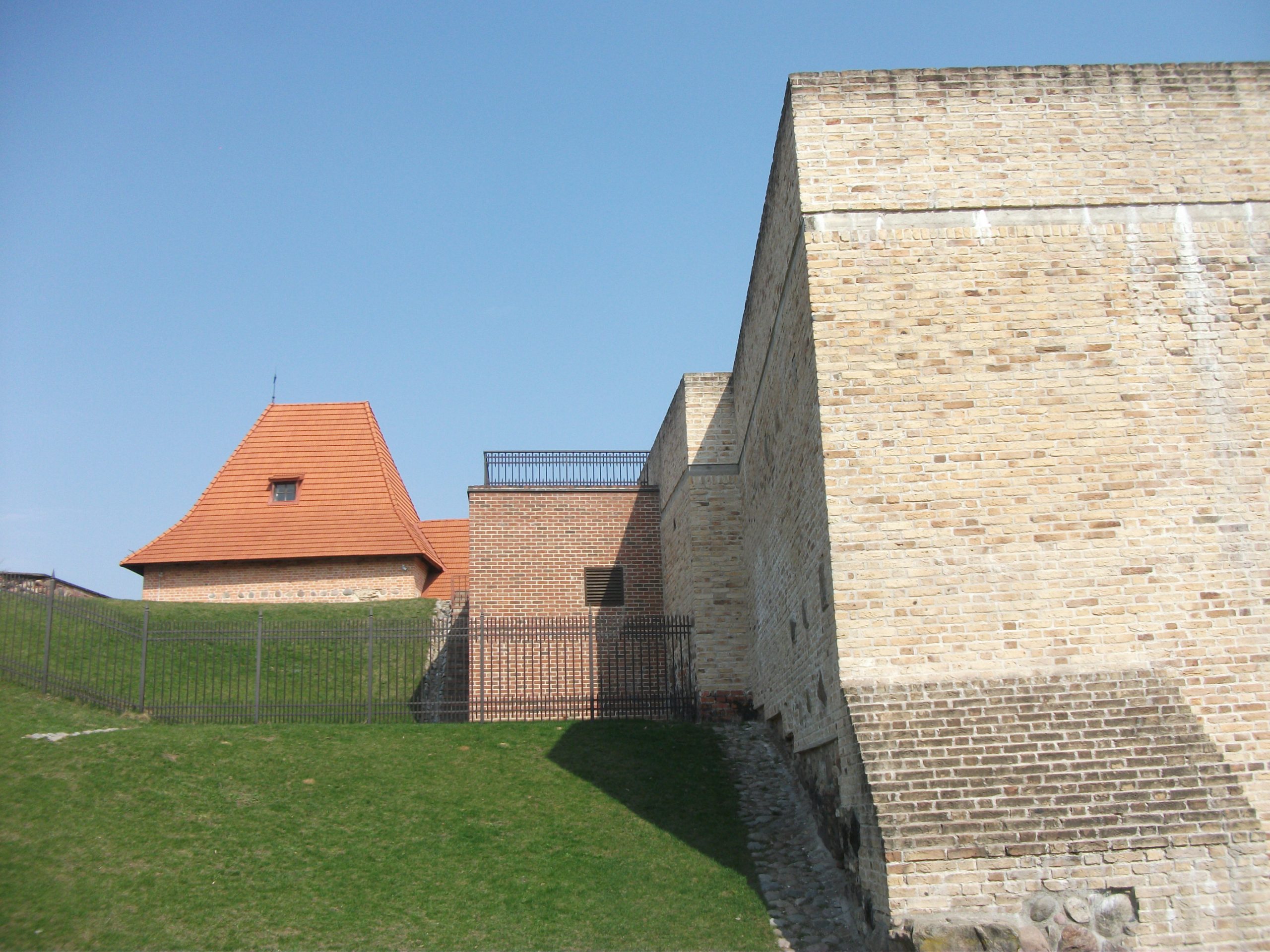 The fortifications at the top of Tower St. have been restored and today form the Bastion Museum of the original early 17th century Barbecan
The fortifications at the top of Tower St. have been restored and today form the Bastion Museum of the original early 17th century Barbecan
 A view from Tower St. on St. Casimir church (early 17th century Baroque style)
A view from Tower St. on St. Casimir church (early 17th century Baroque style)
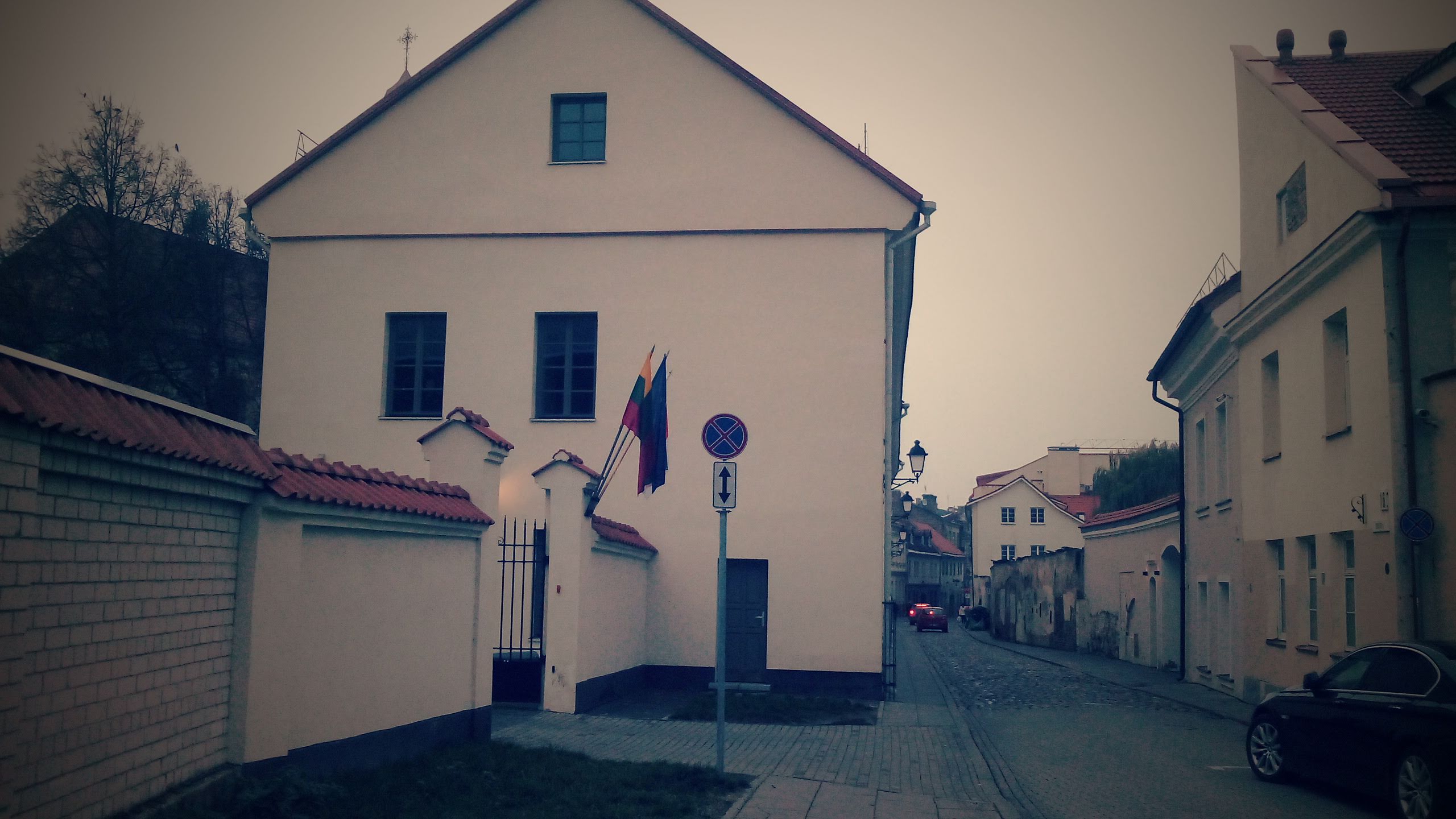 Tower St. with the building of the former Augustine monastery (left)
Tower St. with the building of the former Augustine monastery (left)
All photos are copyrighted by Vladislav B. Sotirovic
© Vladislav B. Sotirovic 2020
RELATED POSTS

The Jewish Str. in Vilnius was known as hosted the Great Synagogue of Vilnius, the Jewish (Strashun) Library of Vilnius, the Schulhoyf yard, the Gaon House and the Gaon Synagogue among other buildings Gaon Str. with the Stikliai (Glass) Hotel on the corner of the Glass Square where the glass products have been sold since the mid-16th centuryAt the entrance to Gaon Str. in 1941 it was the gate to the Small Jewish Ghetto which existed from September 6th to October 29, 1941. The Small Jewish Ghetto had around 11.000 inhabitantsAll photos are copyrighted by Vladislav B. Sotirovic© Vladislav B. Sotirovic 2019
Continue Reading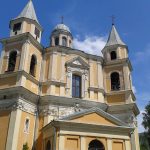
The interior sculptural décor was created by Pietro Perti (Italian master) in 1700-1705. Twin towers were built on in the 18th century. It was built by the efforts of Casimir Sapieha the Younger (1637-1720) in 1694-1717 On the façade frieze two Christian soldiers taken into captivity by the Muslims are represented. The main goal of the Trinitarian Order was returning such captives to their homelands The church has an impressive cupola (dome), the interior is adorned with stucco relief works and sculptures - a large part of them is survived. The church is a "sister" to the Church of St. Peter and St Paul in Vilnius (Antakalnis)All photos are copyrighted by Vladislav B. Sotirovic© Vladislav B. Sotirovic 2019
Continue Reading
One house in Augustijonų Street in Vilnius Old Town. Behind the house is the Church of Our Lady, Comfort of the AfflictedA view from Augustijonų Street on the top of the tower of the Church of Our Lady, Comfort of the Afflicted. This church used to be known for its lavish decoration, but the altars, pulpit, and organ were removed in 1852 when it was transformed into a Russian Orthodox Church One courtyard in Augustijonų Street in front of the Church of Our Lady, Comfort of the AfflictedAll photos are copyrighted by Vladislav B. Sotirovic© Vladislav B. Sotirovic 2019
Continue Reading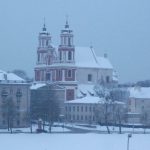
The present church was built in the late 17th century, after its predecessor was burnt down in the 1655 during the war with Russia. The church was completed only in the middle of the 18th century The nave is 24 metres high, making it the tallest in Vilnius; and its length is the same, with accounts for its concentrated appearance when viewed from the sideIn the north tower is a particularly ornate chapel, dedicated to the Dominican St. Hyacinth, with frescoes depicting scenes from his life. The fresco above the entrance depicts the Virgin Mary and Angels. The church was returned to the Dominicans in 1993All photos are copyrighted by Vladislav B. Sotirovic© Vladislav B. Sotirovic 2018
Continue Reading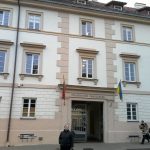
Hostel Courtyard of the Old Campus of the Vilnius UniversityIn the late 19th century all houses of the courtyard were reconstructed and in the early 21st century water supply and sewerage systems were installed. Apartments were rented in those housesInterior of the present-day Faculty of Philosophy. After the reconstruction was completed in the spring of 2005, the Faculty of Philosophy was relocated hereAll photos are copyrighted by Vladislav B. Sotirovic© Vladislav B. Sotirovic 2023
Continue Reading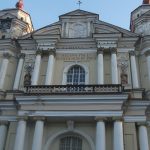
The founder of the church was a Grand Hetman and Vilnius Voivode of the Grand Duchy of Lithuania. The 17th-century church's façade is modest, however the interior is richly ornate with a number of stucco mouldings The church was built to mark the liberation of Vilnius from Moscow (The 1655-1661 War) and the founder's own escape from the hands of rebellious soldiers. The interior was created by the Italians G. P. Perti and G. M. Galli, who decorated it with more than 2,000 stucco mouldings The chandelier was created in 1905 in Riga and represents the Biblical Noah's arkAll photos are copyrighted by Vladislav B. Sotirovic© Vladislav B. Sotirovic 2018
Continue Reading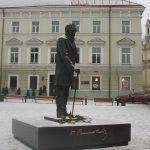
A monument to dr. Jonas Basanavičius in Vilnius in front of the building of the Lithuanian National PhilharmonicDr. Jonas Basanavičius chaired the session of Lithuanian Council that adopted the Act of Independence of Lithuania on 1918-02-16. He was the first to sign the Act of the Proclamation of the Lithuanian IndependenceBalancing between Lithuanian and Polish interests, he refused to participate in the opening of the Polish Stefan Batory University (today Vilnius University)All photos are copyrighted by Vladislav B. Sotirovic© Vladislav B. Sotirovic 2020
Continue Reading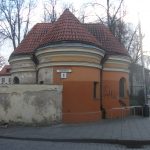
The small garden between the church and the street used to be a cemetery. It is still occupied by a mausoleum built in 1708 for the Suzin's familyThe Suzin's family chapel was functioning as a souvenir shop during the Soviet administration The Suzin's family mausoleum chapel is located on the corner of Trakų St. and Franciscan St. in the Old Town in VilniusAll photos are copyrighted by Vladislav B. Sotirovic© Vladislav B. Sotirovic 2020
Continue Reading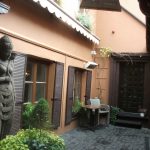
The building of Vilnius Gymnasium of Vytautas the Great - the first gymnasium in Lithuanian language est. in Vilnius at the beginning of the 20th centuryThe backside of the Church of Our Lady, Comfort of the Afflicted seen from Augustijonų Street in Vilnius Old Town. In Soviet times the church was used as a warehouse, and in 1967 the interior was divided into several shops by the construction of concrete floors. The building is today in urgent need of restorationThe entrance to the Jesuit Gymnasium in Augustijonų Street in Vilnius Old Town. Behind the gymnasium is St. Casimir ChurchAll photos are copyrighted by Vladislav B. Sotirovic© Vladislav B. Sotirovic 2019
Continue Reading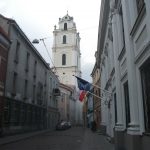
In this street, it was used to be a market place where it meets Pilies street. The first Town Hall is also believed to have stood on this spot Pharmacy house in St. John St. No. 5. Georg Schulz's pharmacy operated in this house since 1639. During the war in 1655, the house was burned down. In 1781, pharmacist Koszyk acquired the ruined building and reconstructed it The Pac estate. Since 1628, the building belonged to the Pac magnate family of the Grand Duchy of Lithuania. In 1783, the dilapidated building was bought, renovated and decorated by the Chancellor of the Grand Duchy of Lithuania - Alexander Michael Sapieha. Currently, the building belongs to the Polish Embassy All photos are copyrighted by Vladislav B. Sotirovic© Vladislav B. Sotirovic 2020
Continue Reading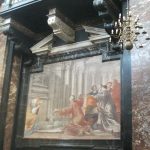
The silver cofin of St. Casimir is under a plaster canopy accompanied by relics. Under the cofin is a miraculous painting in a silver frame, with a silver statue with the saint's attributes placed on the cofin. The relief features a very rare depiction of a smiling Blessed Virgin Mary with Baby JesusIn the chapel there are eight silver-plated wooden Baroque statues of the Kings and Grand Dukes of Poland and Lithuania from the Gediminid and Jagiellon dynasties from the 17th centuryThree-Handed Image of St. Casimir c. 1520. This painting is considered to be miraculous. In 1743 the painting was put into a silver, gold-plated framing. St. Casimir is holding lilies and a rosary, which are his symbolsAll photos are copyrighted by Vladislav B. Sotirovic© Vladislav B. Sotirovic 2020
Continue Reading
The Church of the Heart of Jesus is a significant monument of Baroque (finished in 1756). It is the only Roman Catholic church in Lithuania to be built along a Greek Orthodox cross designThe church has a large octagonal cupola (dome) and a very reach the elegant exterior. The interior is no less magnificent, although it was severely damaged during the Soviet timeAfter 1945, a prison was established in the church and convent buildings. The church interior and the plan of the convent buildings were transformed. After 1990, the sacral buildings are returned to their former ownersAll photos are copyrighted by Vladislav B. Sotirovic© Vladislav B. Sotirovic 2020
Continue Reading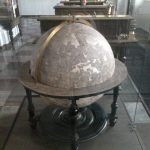
Vilnius University was the first observatory center in Eastern Europe and the 4th in the worldWhite Hall now houses unique astronomical instruments and a reading roomThe narrow staircase leads to the observatory tower, which reveals a panorama of the Vilnius Old TownAll photos are copyrighted by Vladislav B. Sotirovic© Vladislav B. Sotirovic 2023
Continue Reading
This short (250 m), narrow and crooked street with Baroque and Classical houses is surrounded by curving, walls, ancient façades and typical 17th and 18th-century courtyardsIn Bernardinų St. in the house No. 11 a famous Polish-Lithuanian poet Adam Mickiewicz lived in April-June 1822. His apartment is located on the left side of the ground floor which is today transformed into the museumBernardinų St. connects the ensemble of the Churches of St. Anne and Bernardines with Pilies St. In 16th century, it was a section of a road connecting the complex of royal castles with the Bernardinų Gate of the cuty defensive wall All photos are copyrighted by Vladislav B. Sotirovic© Vladislav B. Sotirovic 2020
Continue Reading
One of Baroque gates of the Sapieha ParkAmong the surviving details of the palace are Baroque façades with stucco relief works by Pietro Perti and three Baroque gates. The park is the only one in Vilnius Vilnius with features of a regular Baroque park The palace and the gates were decorated with sculptures and frescoes created by masters who had worked in the Church of St. Peter and St. Paul and St. Casimir's Chapel of the Cathedral Basilica in VilniusAll photos are copyrighted by Vladislav B. Sotirovic© Vladislav B. Sotirovic 2019
Continue Reading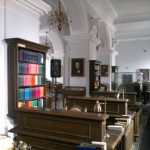
The architect whose name is most closely associated with Vilnius University is the Jesuit Tomas Zhebrauskas who founded (together with Elžbieta Oginskaitė-Puzinienė, the daughter of the famous manor owner Mykolas Oginskis) and designed the observatory, in 1753. The White Hall belongs to the observatory The astronomical observatory of Vilnius University is one of the oldest in Europe and the oldest in the former Polish-Lithuanian Commonwealth. It was famous in Europe for its astronomers and their works until it was closed after the fire of 1876The White Hall today is, in fact, a reading room of the Library of Vilnius UniversityAll photos are copyrighted by Vladislav B. Sotirovic© Vladislav B. Sotirovic 2023
Continue Reading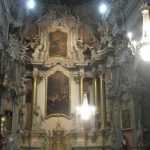
The interior od the church is in the Rococo style with the exception of the Pac Chapel, which is late Baroque in the exterior, and rather Classical in the interior Impressive, gently-curved church pulpit in the Rococo style is created from wood and gold-plated tin in the second half of the 18th centuryThe church's mural painting is the only one of its size remaining in Lithuania. One arch depicts 19 scenes from St. Theresa's lifeAll photos are copyrighted by Vladislav B. Sotirovic© Vladislav B. Sotirovic 2020
Continue Reading
The Church of the Assumption is one of the Vilnius' most beautiful Baroque churches and most mature building of the Vilnius' Baroque schoolConstruction on the church began in 1695 and the final work was carried out by Vilnius' Baroque architect Johann Christoph Glaubitz (1700-1767) in 1750-1756The front façade is adorned by a domical rotunda vestibule, and two elegant towers with clocks All photos are copyrighted by Vladislav B. Sotirovic© Vladislav B. Sotirovic 2019
Continue Reading
The chapel was built in 1624-1636 to hold the remains of St. Casimir who was canonized in 1604. The chapel is part of the Cathedral Basilica in Vilnius The construction of the Early Roman Baroque-style chapel was funded by rulers Sigismund and Vladislaus Vasa. It was a place where the Grand Dukes of Lithuania prayed and could be reached by a corridor joined to the Lower CastleThe chapel is the work of Italian masters and one of the most beautiful Baroque mausoleums in Lithuania All photos are copyrighted by Vladislav B. Sotirovic© Vladislav B. Sotirovic 2019
Continue Reading
Wonderful panoramic view can be seen from the roof (platform) of Gediminas Tower (Upper Castle Tower)Despite wars and destructions, the architectural ensemble of Vilnius Old Town remains unique. Baroque domes and towers of Vilnius Old Town coexist with an irregular medieval city plan Vilnius Old Town is lacking German or Scandinavian features, rather reminiscent of Prague or Rome, Vilnius differs greatly from the other Baltic capitalsAll photos are copyrighted by Vladislav B. Sotirovic© Vladislav B. Sotirovic 2019
Continue ReadingThe Jewish Street and Gaon Street in the Old Town of Vilnius
Church of Our Lord Jesus and the Trinitarian Monastery
Augustijonų Street (I)
Church of St. Jacob and Philip (2)
Bursa (Student Dormitory) Courtyard at Vilnius University’s Old Campus
Church of St. Peter and St. Paul in Vilnius
Jonas Basanavičius Monument in Vilnius
The Suzin’s Family Mausoleum Chapel
Augustijonų Street (II)
St. John Steet in Vilnius
Chapel of St. Casimir (interior)
Church of the Heart of Jesus and the Convent of the Visitationists in Vilnius
Astronomic Instruments at the White Hall at Vilnius University
Bernardinų Street in Vilnius
Sapieha Estate and Park
The White Hall of the Old Campus of Vilnius University
Church of St. Theresa (Interior)
Church of the Assumption
Chapel of St. Casimir (exterior)
Vilnius Old Town Panoramic View

